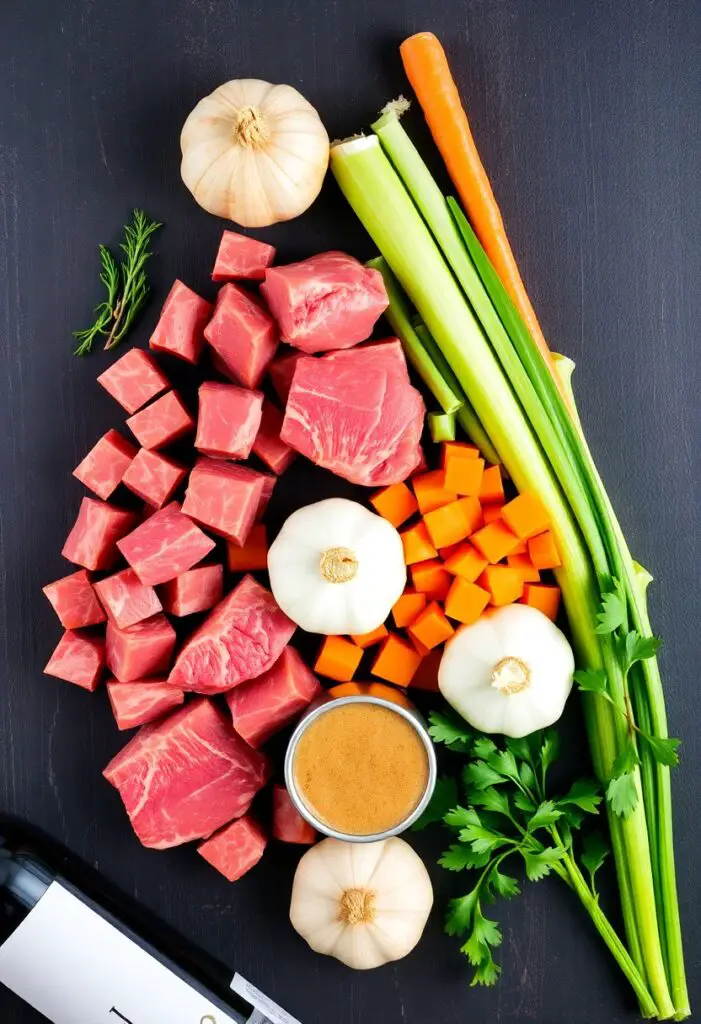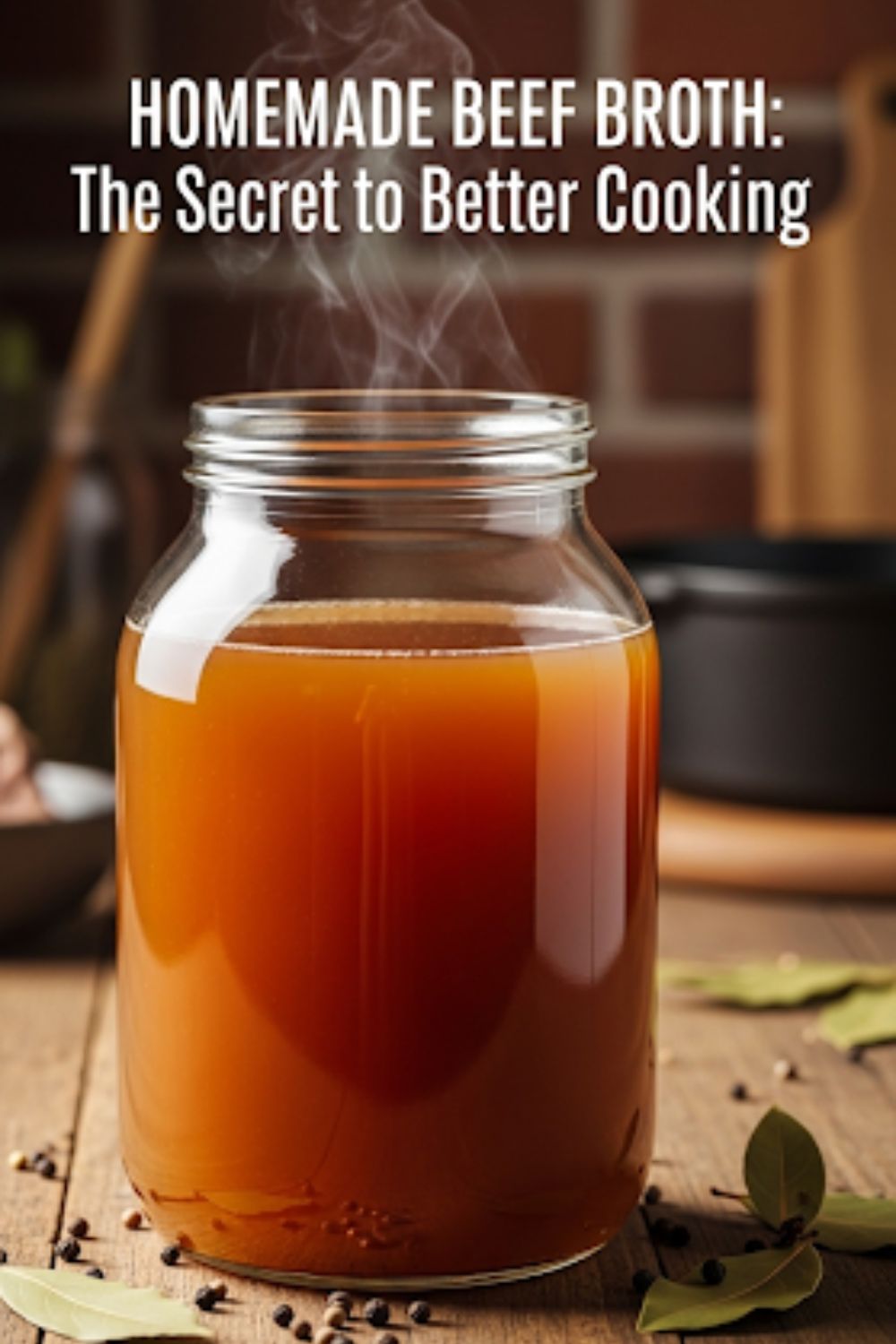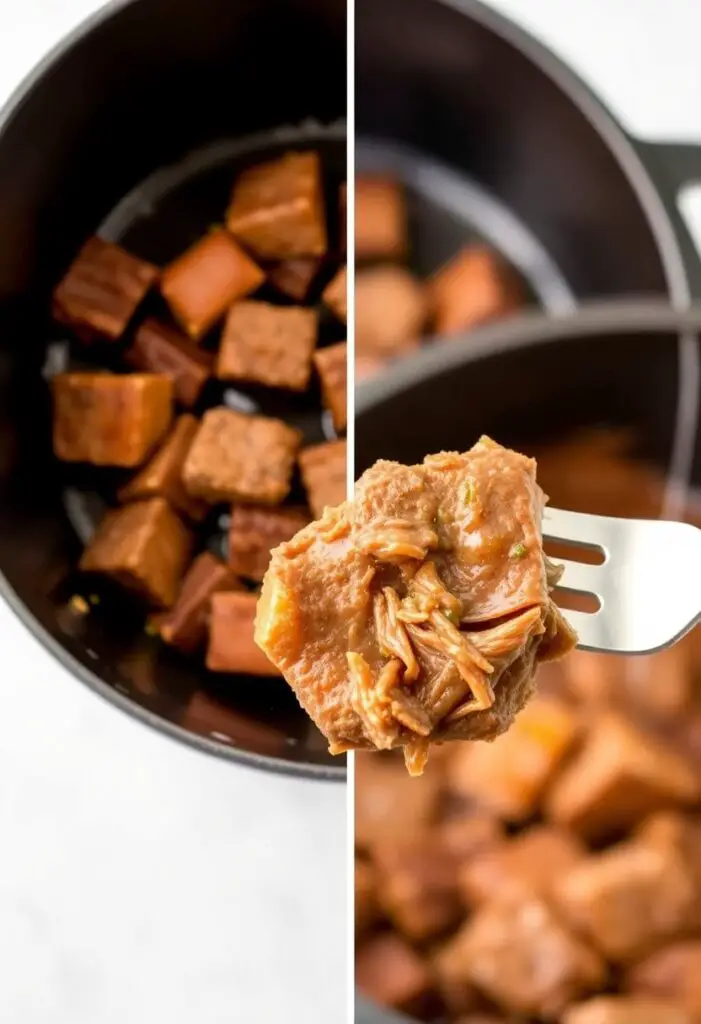How to Cook Beef Stew Meat (So It’s Actually Tender, Not a Shoe Sole)
Let’s be honest, we’ve all been victims of a bad beef stew. You know the one. The broth is okay, the veggies are fine, but the beef… oh, the beef. Each cube is a tough, chewy, flavorless lump that you have to gnaw on for what feels like an eternity. You followed the recipe, you simmered it for hours, so why does it feel like you’re chewing on a rubber tire? Well, my friend, the problem isn’t you; it’s the method. Today, you are going to learn how to cook beef stew meat the right way—the foolproof way that guarantees fall-apart, melt-in-your-mouth tenderness every single time.
Why This “Recipe” Is Awesome (It’s a Foundational Cooking Superpower)
This isn’t just a recipe for a single dish; it’s a masterclass in a technique called braising. Why is this awesome? Because once you master this, you can transform the cheapest, toughest cuts of meat into something incredibly luxurious and delicious. This method is your ticket to:
- Insane Flavor: We’re going to build layers of deep, rich, savory flavor that you simply can’t get by just boiling meat in water.
- Fork-Tender Texture: Say goodbye to chewy meat forever. The low-and-slow simmer breaks down all the tough connective tissue, turning it into rich, silky gelatin that makes the meat unbelievably tender.
- A “Lazy” Cooking Method: While it takes time, most of it is completely hands-off. Your pot does all the work while making your entire home in Khulna smell like a cozy, five-star restaurant.
- Budget-Friendly Brilliance: Stew meat is inexpensive. This technique allows you to take a budget-friendly cut and make it taste like a million bucks.
Get ready to level up your entire cooking game. You’re not just making stew; you’re becoming a master of meat.
Ingredients: Your Blueprint for a Classic Beef Stew
We’ll learn the technique through the lens of a classic, hearty beef stew.
- 2 pounds beef stew meat, cut into 1-inch cubes (beef chuck is ideal)
- ⅓ cup all-purpose flour
- 1 teaspoon salt
- ½ teaspoon black pepper
- 3 tablespoons vegetable oil
- 2 medium onions, chopped
- 4 carrots, peeled and chopped into chunks
- 3 celery stalks, chopped
- 4 cloves garlic, minced
- 1 cup dry red wine (like Cabernet or Merlot) or extra beef broth
- 4 cups beef broth (preferably homemade, but store-bought is fine!)
- 1 tablespoon tomato paste
- 1 teaspoon dried thyme
- 2 bay leaves
- 1 ½ pounds potatoes, peeled and cut into 1-inch chunks
Key Ingredient Notes:
- The Meat: Look for beef chuck. It has a great balance of meat and fat/connective tissue, which is exactly what you want for a tender stew.
- The Wine: Using red wine adds an incredible depth of flavor. If you don’t use alcohol, you can just substitute it with more beef broth, but the flavor won’t be quite as complex.
Tools & Kitchen Gadgets Used: Your Braising Command Center
The right pot is the real hero of this story.
- A Large, Heavy-Bottomed Dutch Oven or a Stockpot with a Tight-Fitting Lid (This is essential for even heat distribution.)
- A Large Plate or a Sheet Pan (For your floured meat.)
- Tongs
- Wooden Spoon or Spatula
- Knife and Cutting Board
- Measuring Cups and Spoons
Step-by-Step Instructions: The Art of the Tender Transformation
This process has a few critical steps. Don’t skip them! Each one builds a layer of flavor.
Act 1: The Sear (The Most Important Step!)
- Prep the Meat: Pat your beef stew meat completely dry with paper towels. This is a non-negotiable step for getting a good sear! In a medium bowl, whisk together the flour, salt, and pepper. Add the dry beef cubes and toss to coat them evenly.
- Heat the Pot: Place your Dutch oven over medium-high heat. Add the vegetable oil. Let it get hot and shimmery.
- Sear in Batches: Place half of the floured beef cubes into the hot pot in a single layer. Do not overcrowd the pan! Let the meat sear, undisturbed, for 3-4 minutes per side, until a deep, brown crust forms. Remove the seared meat to a clean plate. Repeat with the second batch of beef. This browning process, called the Maillard reaction, creates immense flavor.
Act 2: Building the Flavor Base
- Sauté the Aromatics: Reduce the heat to medium. Add the chopped onions, carrots, and celery to the pot. Sauté for 5-7 minutes, scraping up some of the browned bits from the bottom, until the vegetables have softened. Add the minced garlic and cook for one more minute until fragrant. Stir in the tomato paste and cook for another minute.
- Deglaze the Pan: Now for the magic trick. Pour in the red wine (or 1 cup of beef broth). Use your wooden spoon to scrape up all those stubborn, delicious browned bits (called “fond”) from the bottom of the pot. Let the wine simmer and reduce by about half.
Act 3: The Low and Slow Simmer
- Combine Everything: Return the seared beef to the pot. Add the 4 cups of beef broth, thyme, and bay leaves. Stir everything together.
- Bring to a Simmer (NOT a Boil): Increase the heat and bring the stew to a gentle simmer. Once it’s bubbling lightly, reduce the heat to low, cover the pot, and let it cook for at least 1 ½ to 2 hours. You want the gentlest of bubbles. A hard boil will make your meat tough.
- Add the Potatoes: After the initial simmer, add the potato chunks to the pot. Give it a good stir, put the lid back on, and continue to simmer for another 45-60 minutes, or until the potatoes are tender and the beef is fall-apart-tender when pierced with a fork.
- Finish and Serve: Remove the bay leaves. Taste the stew and adjust the seasoning with more salt and pepper if needed. Serve hot!
Calories & Nutritional Info (Per Serving, Estimated)
This is hearty, wholesome goodness. (This is for one serving, assuming 6 hearty servings.)
- Estimated Calories per serving: ~450-550 calories
- Fat: ~20g
- Carbohydrates: ~30g
- Protein: ~35g
Common Mistakes to Avoid: Don’t End Up with Tough Meat!
Avoid these common stew-sabotaging mistakes.
- Skipping the Sear: I know it takes time, but searing is where all the deep, savory flavor comes from. Un-seared meat makes a pale, bland stew.
- Overcrowding the Pan: If you dump all the meat in at once, it will steam instead of sear. You won’t get that beautiful brown crust. Sear in batches!
- Boiling Instead of Simmering: This is a huge one. A rapid boil will cause the muscle fibers in the meat to seize up and become tough. A low, gentle simmer is the key to melting the connective tissue and achieving tenderness.
- Not Cooking It Long Enough: Tough cuts of meat need time. If your stew has simmered for an hour and the meat is still tough, it doesn’t mean it’s overcooked; it means it’s under-cooked. Give it more time on low heat.
Variations & Customizations: Your Stew, Your Story
Once you master the basic braise, the possibilities are endless.
- Beef and Guinness Stew: Replace the red wine with a dark stout beer like Guinness. Add a tablespoon of Worcestershire sauce for extra umami.
- Herby Beef and Mushrooms: Add 8 ounces of sliced cremini mushrooms along with the other aromatics. Stir in a tablespoon of chopped fresh rosemary or parsley at the end.
- Simple Braised Beef: Skip the carrots, celery, and potatoes. Just braise the beef with onions, garlic, and broth until tender. Shred the beef and serve it over egg noodles, mashed potatoes, or in tacos.
FAQ Section: All Your Stew-pendous Questions, Answered
You have questions about this hearty classic. I have answers.
- Q: What is the best cut of meat for beef stew? A: Beef chuck is the king of stew meat. It comes from the shoulder and has a good amount of fat and connective tissue that breaks down into rich, tender goodness during a long, slow cook.
- Q: Do I really have to sear the meat? It takes so long. A: Yes. I’m sorry, but yes. Searing creates the Maillard reaction, which is responsible for the deep, complex, savory flavor. Skipping it is the difference between a “meh” stew and an amazing one.
- Q: Can I make this in a slow cooker or pressure cooker? A: Absolutely!
- Slow Cooker: Follow all the searing and deglazing steps on the stovetop first. Then, transfer everything to your slow cooker and cook on low for 6-8 hours.
- Pressure Cooker/Instant Pot: Use the sauté function to sear the meat and cook the aromatics. Add the rest of the ingredients and cook on high pressure for 35-40 minutes. Let the pressure release naturally for 10 minutes.
- Q: My meat is still tough after hours of cooking. What did I do wrong? A: It’s likely one of two things: you simmered it at too high a temperature (a boil instead of a simmer), or it simply needs more time. If you’ve been simmering gently, just give it another 30-60 minutes.
- Q: What does “deglazing” mean? A: Deglazing is simply adding a liquid (like wine or broth) to a hot pan to release all the caramelized, browned bits stuck to the bottom after searing. Those bits are pure flavor!
- Q: How do I thicken my stew if it’s too thin? A: The flour on the meat should thicken it nicely. If you want it even thicker, you can make a “slurry” by mixing 1 tablespoon of cornstarch with 2 tablespoons of cold water, then stirring it into the simmering stew for the last few minutes of cooking.
- Q: Can I freeze beef stew? A: Yes! It freezes beautifully. Let it cool completely, then store it in freezer-safe containers for up to 3 months. Thaw in the refrigerator overnight before reheating.
Final Thoughts: You Are Now a Master of the Braise
Congratulations! You have officially conquered the tough cuts. You are no longer just a cook; you are a culinary alchemist, turning humble stew meat into fork-tender gold. Go forth, fill your home with the incredible aroma of a slow-simmered stew, and bask in the glory of your perfectly tender creation. That sad, chewy beef from your past? It doesn’t stand a chance.


